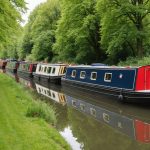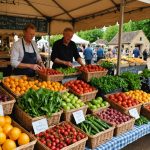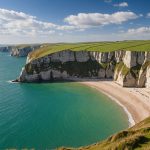Essential UK Camping Locations for Bird Photography
Exploring UK camping spots offers exceptional opportunities for bird photography. Location plays a vital role in capturing unique wildlife moments, enhancing the overall photography experience. Several sites stand out as prime destinations for birdwatchers.
RSPB Bempton Cliffs on the East Yorkshire coast is renowned for its seabirds, including puffins and gannets. The towering chalk cliffs provide dramatic backdrops for compelling photographs. Moving inland, the Cairngorms National Park in Scotland hosts stunning scenery and abundant bird species like golden eagles and capercaillies, ideal for capturing majestic shots.
Have you seen this : Explore Ultimate UK Campsites for Memorable Horse Riding Adventures: Your Complete Guide to Booking Equestrian Getaways!
In Norfolk, Cley Marshes offers a haven for waders and reedbed specialists. The diverse habitats support varied species, making it a prime spot for both amateur and seasoned photographers. These locations not only offer the chance to witness rare birds but also create an immersive experience in nature.
Choosing the right location significantly impacts the types of birds encountered and the quality of photographs achieved. Thus, planning ahead can significantly elevate one’s bird photography experience. Each site provides a distinct backdrop and unique viewing experiences that enhance the craft of capturing wildlife images in their natural settings.
Also read : Explore the UK’s Top Campsites with Engaging Historical and Cultural Tours: Your Definitive Guide
Essential Gear for Bird Photography While Camping
Embarking on a bird photography journey requires well-chosen photography gear. Successful wildlife photography is not merely about capturing an image, but about bringing life to it. Bird Photography Equipment begins with a recommended camera and lens. Consider using a camera with high frame rates and a lens with ample zoom capabilities. These ensure closer shots of elusive or distant subjects without compromising clarity.
Binoculars and field guides become indispensable when birdwatching for identification. Binoculars, ideally lightweight and durable, enhance observation distances. Meanwhile, a comprehensive field guide facilitates learning about bird species, boosting photographing accuracy by understanding behavioral patterns.
Camping also necessitates specific gear. A sturdy tripod is pivotal for stabilising long lenses, especially useful in low-light conditions. Accessories, such as camera settings for adjusting to varying environments, are critical for photo success.
Remember additional camping gear. This involves robust, weather-proof tents and versatile clothing suitable for different climates. Ultimately, the right mix of these elements fosters a seamless blend of camping enjoyment and photographic excellence.
Timing and Techniques for Capturing Bird Photos
For superb bird photography, understanding the importance of timing and photography techniques is essential. Birds are most active during the early morning and late afternoon, known as the “golden hour.” Natural light during these periods creates softer shadows and richer colours, providing an ideal setting for capturing birds in their natural habitats.
Approaching birds without disturbing them requires skill. Practise techniques like moving slowly and quietly, using natural obstacles like trees as cover. These approaches help minimize any disturbance, allowing you to photograph the birds behaving naturally.
Incorporating natural light enhances photo quality. Adjusting your position relative to the light source can capture birds with glowing backgrounds or dynamic silhouettes. Utilising techniques such as backlighting or side lighting can add creative elements to your bird photography.
Birdwatching Strategies may involve learning the patterns and habits of different bird species. Tools such as apps or field guides can support identifying key behaviour times, enabling you to anticipate and prepare for perfect shots. Mastering these techniques alongside precise timing can transform ordinary photos into extraordinary wildlife captures.
Safety Tips for Camping and Bird Photography
Ensuring safety during your camping and bird photography excursions is paramount. While indulging in the beauty of wildlife, it’s essential to be aware of potential hazards. Understanding and adhering to wildlife awareness and safety protocols ensures a safer and more enjoyable experience.
Navigating through remote camping areas requires preparation. Equip yourself with the right gear: a reliable map, GPS device, and a first aid kit to handle minor injuries. These tools are invaluable in managing unexpected situations and ensuring you remain on the right path.
Being prepared with first aid tips is crucial for outdoor photography enthusiasts. Learn basic first aid practices, as they can be lifesaving. For instance, knowing how to treat insect bites or minor cuts will minimise discomfort during your excursions.
Finally, personal safety cannot be overstated. Communicate your itinerary with someone you trust and check in regularly. These precautions are simple but effective in ensuring a safe trip. By prioritizing these safety tips and protocols, you can fully embrace the joy of outdoor photography and birdwatching, with peace of mind in knowing you’re prepared for any eventuality.
Expert Insights and Personal Anecdotes
Bird photography offers a unique blend of creativity and challenge. Seasoned photographers often share valuable insights gained from years of experience in the field. As Steve Smith, a renowned wildlife photographer, advises, “Patience is your greatest ally. Waiting for the perfect moment can transform an ordinary photo into something truly remarkable.” This patience is a recurring theme among experts, emphasizing its role in capturing incredible wildlife images.
Personal anecdotes illuminate the joys and trials of bird photography. For instance, photographer Linda Brown recalls a memorable encounter in Scotland: “I waited for hours in the Cairngorms, nestled quietly by a tree, when finally a golden eagle soared overhead. The anticipation made the shot all the more rewarding.” Such stories highlight the profound connection between perseverance and success.
Lessons from the field often underscore the importance of adaptability. Weather changes and unpredictable wildlife behaviour require flexibility. Many photographers echo this sentiment, advising newcomers to remain open-minded and prepared for unexpected challenges. Ultimately, these insights and stories enrich the understanding of wildlife photography, inspiring both novices and seasoned photographers alike to pursue their birdwatching and photography passions with renewed enthusiasm.









